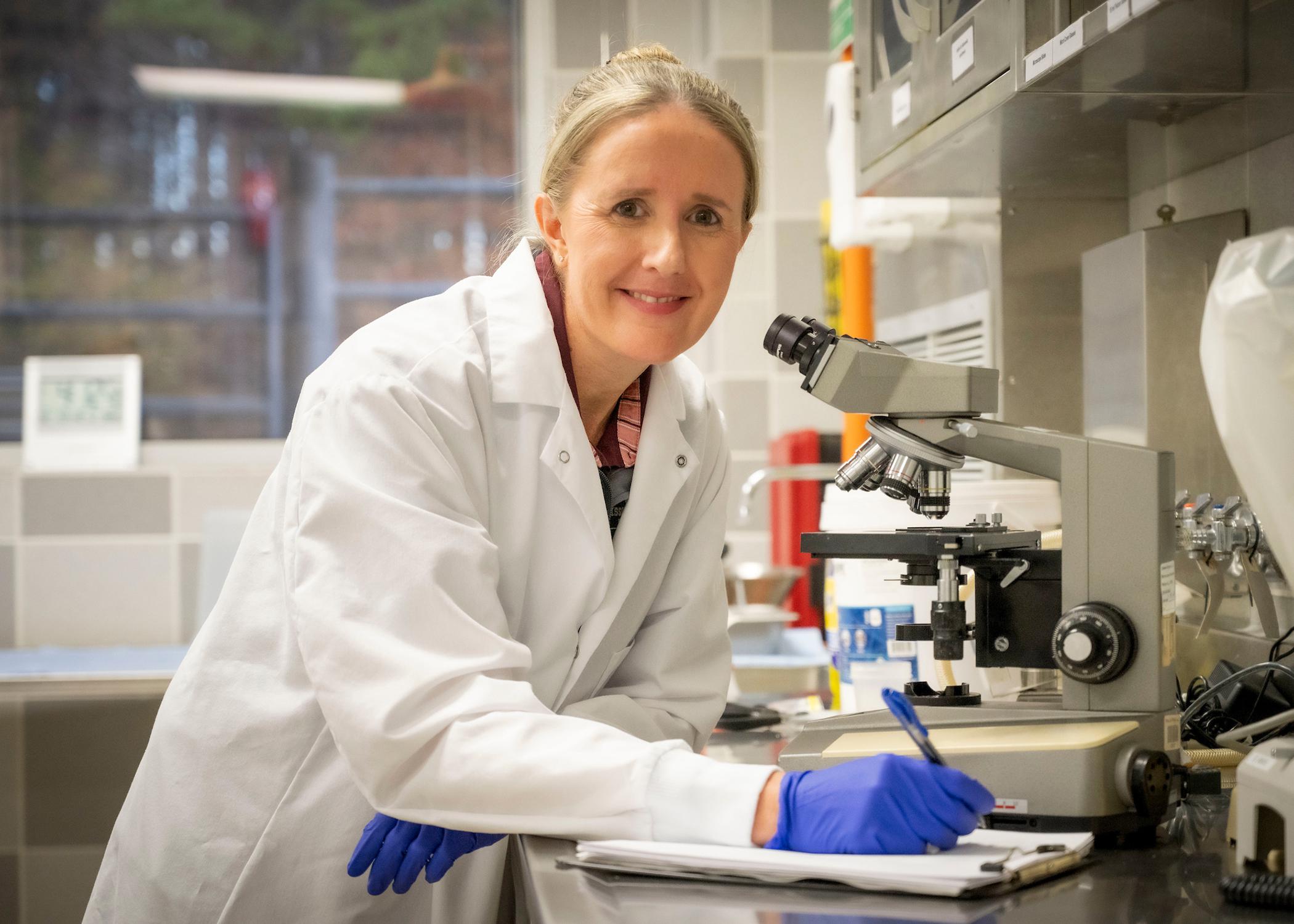MSU experts tackle bird flu crisis driving record-high egg prices
STARKVILLE, Miss. -- If egg prices have seemed higher than ever lately, it’s because they are, and consumers can place much of the blame squarely at the feet of the ongoing bird flu outbreak.
The U.S. Department of Agriculture reported the national average for a dozen eggs was $6.70 on Jan. 31 -- more than 60% higher than just six weeks before on Dec. 20, 2024, when the average was $4.07 per dozen. The average fluctuated mostly between the $1 to $3 per dozen range in 2024 until mid-October.
As of Feb. 3, confirmations of highly pathogenic avian influenza, or HPAI, had led to the depopulation of nearly 23 million birds nationwide in the previous 30 days. Across the U.S., the novel virus has been detected in 123 commercial and backyard flocks, according to USDA data. The virus is also referred to as H5N1 bird flu by the Centers for Disease Control and Prevention.
Fewer birds have meant fewer eggs, driving up prices for the remaining supply and leaving some grocery store egg coolers with empty shelves.
Josh Maples, an agricultural economist with the Mississippi State University Extension Service, said consumer demand in general has also contributed to high prices.
“It is a combination of strong consumer demand and supply shocks that are driven by HPAI,” he said. “There has been strong demand for eggs over the past few years, especially during the holiday months, but the supply disruptions caused by HPAI since 2022 have been a major reason for the sticker-shock level prices consumers face.”
The latest confirmation of HPAI in Mississippi was Dec. 30, 2024, at a commercial broiler production facility in Copiah County, affecting more than 200,000 birds. Another case was reported Dec. 20 in Greene County where more than 34,000 birds were culled from a breeder house.
Maples said consumers should expect egg prices to remain extremely high in the short term but that prices could retreat as soon as this summer. How soon it happens, he said, will involve a balancing act between supply and demand.
“Producers will try to expand their flocks because of the high prices and incentive to produce more eggs, and consumers are also likely to cut back somewhat on egg purchases because of the high prices,” he said. “Both of those factors would suggest lower prices in the future, but the wild card is HPAI. Producers have the incentive to expand, but future HPAI outbreaks among egg-laying flocks would impact that expansion.
“There are seasonal patterns to consumer demand which would typically lead to lower prices as we move past Easter, but that will be affected by any future HPAI disruptions,” Maples added. “Even if demand is seasonally lower in the middle of the year, supply cuts driven by HPAI could still outweigh those seasonal patterns and prices could remain high.”
Mutations complicate transmission prevention
Dr. Natalie Armour Manginsay, director of the MSU Poultry Research and Diagnostic Laboratory, or PRDL, said the current HPAI outbreak differs from the 2014-15 outbreak in that the virus’ current clade persists in wild birds. The clade 2.3.4.4b H5N1 HPAI virus is responsible for the current panzootic -- or widespread animal disease outbreak -- also behaves differently than the 2.3.4.4c clade from a decade ago, she said.
“This clade is highly infectious for ducks, which can shed the virus for more than two weeks, and has become entrenched in some waterfowl populations,” Manginsay said. “This has resulted in spillover to other bird species and has also caused unprecedented infection of multiple wild, captive and domesticated mammal species, including dairy cattle in the U.S.”
While the outbreak is expected to subside as previous ones have when temperatures increase, more robust strategies are needed to deal with HPAI moving forward, she said.
“If the past few years have shown us anything, it is that the virus will likely rear its ugly head again in the fall and may cause seasonal outbreaks for the foreseeable future,” Manginsay said. “There is unfortunately no silver bullet to deal with HPAI, and biosecurity remains the most important defense mechanism.”
On Dec. 30, the USDA Animal and Plant Health Inspection Service, or APHIS, issued an interim final rule requiring farms affected by HPAI to pass a biosecurity audit to restock their poultry and be eligible for future indemnity.
“While the importance of biosecurity cannot be overstated, it seems that HPAI infection of some flocks has occurred despite good biosecurity,” Manginsay said. “There has even been evidence of HPAI entering houses through intake fans in some cases.”
Infection and mortality in multiple bird and mammal species, concerns about human infections and the severe economic impacts of HPAI have raised questions about the ongoing sustainability of culling entire flocks after a case is confirmed and ignited discussions about whether HPAI vaccination of U.S. poultry should be permitted as an adjunct to biosecurity measures, Manginsay said.
“HPAI vaccines are commercially available outside of the U.S.,” she said, “and vaccination with high-potency vaccines matched to the field virus has been shown to protect birds from illness and death caused by HPAI, increase their resistance to exposure and reduce virus shedding from infected birds.”
She said more research is needed to better understand the costs and benefits of implementing HPAI vaccination in the U.S. because there are also potential and significant economic hurdles for some sectors of the poultry industry.
“The main concern with implementing vaccination of flocks is the potential loss of valuable export markets,” Manginsay said, “and negotiations with trading partners would be essential to address this concern.”

Responding to the challenge
MSU Extension is part of a national effort led by the CDC to build an H5N1 virtual asset library that delivers messages and provides easily adoptable measures to prevent the virus’s spread. This program is known as the Extension Collaborative on Immunization Teaching and Engagement, or EXCITE.
The EXCITE H5N1 National Project Team is supporting the work of Extension specialists at land-grant universities who are conducting field surveys of farm workers at dairy operations with identified bird flu outbreaks. Researchers are conducting blood testing of the farm workers using rapid testing developed during the COVID-19 pandemic to determine how and when farm workers are at greatest risk of contracting the virus.
MSU Extension program evaluation specialist Tia Gregory is a member of the project team.
“Our team, with the National Center for Farmworker Health, CDC and USDA, has created a comprehensive methodology for increasing Extension agent, dairy farmer and farmworker knowledge of H5N1 by educating them about human and animal health issues related to H5N1 and enhancing on-farm prevention practices to reduce H5N1 disease,” Gregory said.
In addition, the MSU Poultry Research and Diagnostic Laboratory, or PRDL, performs extensive HPAI testing of commercial and backyard poultry in Mississippi, including routine monitoring and preslaughter testing of flocks as required by the state and testing of sick flocks with increased mortality. PRDL contracts with USDA Wildlife Services to conduct polymerase chain reaction testing on wild bird samples from eight states.
“Our ability to rapidly detect HPAI and to conduct intensive surveillance was proven in the 2022-2023 and 2024 HPAI cases in Mississippi poultry and was crucial to facilitating rapid elimination of the virus on infected premises and continuity of business for the poultry industry,” Manginsay said. “This testing serves as a very important early warning system to alert the poultry industry of specific HPAI risks in various wild bird species and geographic regions.”
In addition to diagnosing diseases, PRDL poultry veterinarians serve the state’s commercial and small flock clients by providing veterinary advice in consultations and field visits.
“We educate veterinary and poultry science students about poultry diseases and are actively engaged in training the next generation of poultry veterinarians through our poultry master’s specialization program for veterinarians,” Manginsay said.
Find more information on avian influenza and biosecurity measures at https://extension.msstate.edu/avian-flu.










